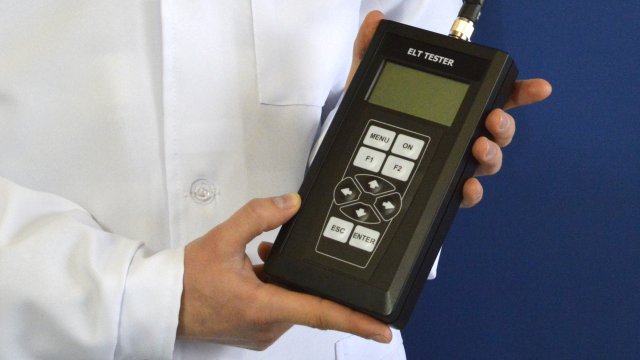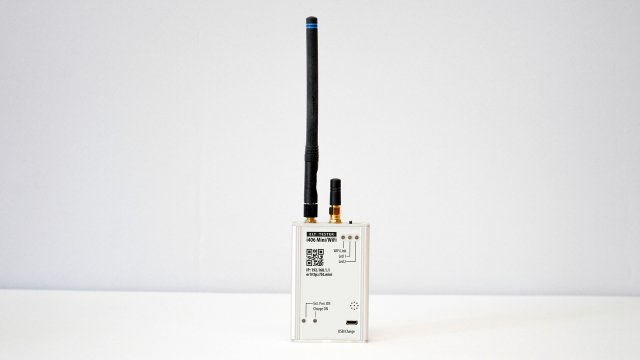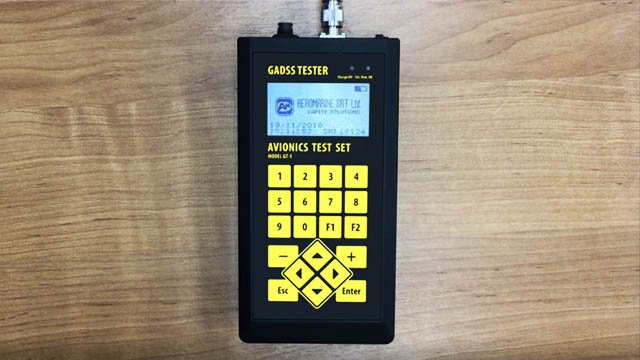Limit your 406 MHz Testing time
This test method met the FAA requirement and most organizations were okay with the idea. That was until the newer 406 MHz ELT distress beacon was developed. Part of the problem is that instead of being in the aeronautical band, 406 MHz is a protected international distress frequency. Plus, with a properly registered 406 MHz ELT, the transmitted signal includes a digital code that can be used to identify the owner. As a result, the FCC can track down anyone who, in its opinion, transmits a fraudulent or non-emergency distress signal, e.g. an FAA test.
Since most 406 MHz ELTs include a low-powered 121.5 MHz homing transmitter, the challenge for the person doing the annual ELT check is how to satisfy the FAA requirement without violating the FCC regulations. Since in most cases the person doing the testing has no way to monitor the 406 MHz emitted coded signal without special equipment and can therefore only listen for the activation of the 121.5 MHz homing signal of the combined 406/121.5 MHz ELT. Short of a change in the regulation, the following is one means of conducting the test. Remember, the purpose of test is to check the aircraft’s installed system from ELT transmitter to its antenna.
Anyone testing an ELT should follow the manufacturer’s recommended procedures. If those procedures are not available and cannot be found, the following is one procedure that has been coordinated with the National Oceanic and Atmospheric Administration (NOAA) which operates the United States portion of the international satellite-based search and rescue system that monitors and processes distress beacon alerts.
Owners of 406 MHz ELTs should limit any test to less than 30 seconds. This will preclude the satellites from receiving a signal from the 406 MHz beacon when activated to the “ON” condition (or switch position) while testing the 121.5 MHz ELT portion of a combined ELT. This will prevent the government from initiating a search and rescue action. There have been numerous reports of unintentional activation of the combined ELTs when periodic maintenance testing of the 121.5 MHz signal is tested to assure proper performance. Activating the “ON” function, which is part of the remote control panel rather than gaining access to the combined ELT and activating the “TEST” function, has led to violations administered from the FCC and causes emergency responders to react in an attempt to locate a downed aircraft. If the selection to the “ON” position is minimized to 30 seconds or less, there is sufficient time protection to prevent crossing the 50-second time threshold for activating the 406 MHz locator signal.
Operators should advise their maintenance personnel of this limitation and possible vulnerability to violations or sanctions.
The following are excerpts from AIM Section 6-2-5, Emergency Locator Transmitter (ELT), dealing with testing, false alarms, and reporting.
Testing
1. EL T s should be tested in accordance with the manufacturer’s instructions. This should be done, preferably, in a shielded or screened room or specially designed test container to prevent the broadcast of signals, which could trigger a false alert.
2. When this cannot be done, aircraft operational testing is authorized as follows:
(a) Analog 121.5/243 MHz ELTs should only be tested during the first five minutes after any hour. If operational test must be made outside of this period, they should be coordinated with the nearest F A A Control T ower or Flight Service Station. T ests should be no longer than three audible weeps. If the antenna is removable, a dummy load should be substituted during test procedures.
(b) Digital 406 MHz ELTs should only be tested in accordance with the manufacturer’s instructions.
(c) Airborne test are not authorized.
False Alarms
Caution should be exercised to prevent the inadvertent activation of ELTs in the air or while they are being handled on the ground. Accidental or unauthorized activation will generate an emergency signal that cannot be distinguished from the real thing, leading to expensive and frustrating searches. A false ELT signal could also interfere with genuine emergency transmissions and hinder or prevent the timely location of crash sites. Frequent false alarms could also result in complacency and decrease the vigorous reaction that must be attached to all ELT signals.
Numerous cases of inadvertent activation have occurred as a result of aerobatics, hard landings, movement by ground crews, and aircraft maintenance. These false alarms can be minimized by monitoring 121.5 MHz and or 243.0 MHz as follows:
(a) In flight when a receiver is available.
(b) Before engine shut down at the end of each flight.
(c) When the ELT is handled during installation or maintenance.
(d) When maintenance is being performed near the ELT.
(e) When a ground crew moves the aircraft.
(f) If an ELT signal is heard, turn off the aircraft’s ELT to determine if it is transmitting. If it has been activated, maintenance might be required before the unit is returned to the “ARMED” position. You should contact the nearest air traffic facility and notify it of the inadvertent activation.
Inflight Monitoring and Reporting
1. Pilots are encouraged to monitor 121.5 MHz and/or 243.0 MHz while inflight to assist in identifying possible emergency ELT transmissions. On receiving a signal, report the following information to the nearest air traffic facility:
(a) Your position at the time the signal was first heard.
(b) Your position at the time the signal was last heard.
(c) Your position at maximum signal strength.
(d) Your flight altitudes and frequency on which the emergency signal was heard: 121.5 MHz or 243.0 MHz. If possible, positions should be given relative to the navigation aid. If the aircraft has homing equipment, provide the bearing to the emergency signal with each reported position.
Courtesy of FAA Aviation News. Plane Talk. Volume 19, Issue 1, March 2006.
406MHz ELT Tester

406 MHz / 243 MHz / 121.5 MHz ELT TESTER (ELTT-124 Test set) is designed to check the avionics emergency locator transmitters (ELT) operating via COSPAS-SARSAT system. Complies with USA (FAA Part 91.207), Canada (CAR 571 Appendix G), Europe (CAA/EuroCAE) requirements.
ELT Tester Mini Wi-Fi

ELT Tester Mini Wi-Fi is third generation device designed to check the avionics emergency locator transmitters (ELT) operating via COSPAS-SARSAT system. Tester is operating with any mobile phone or desktop PC by means of Wi-Fi connection.


